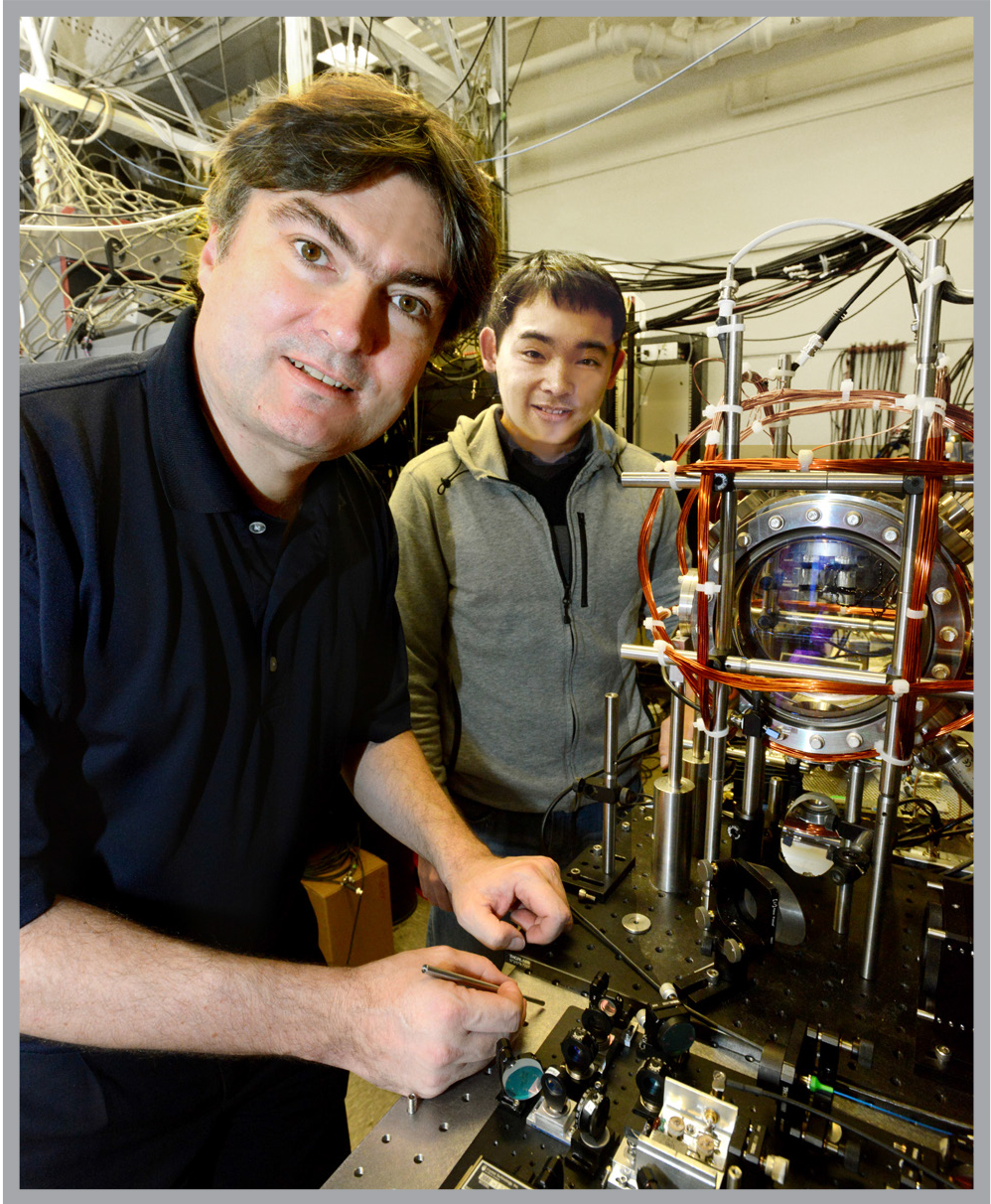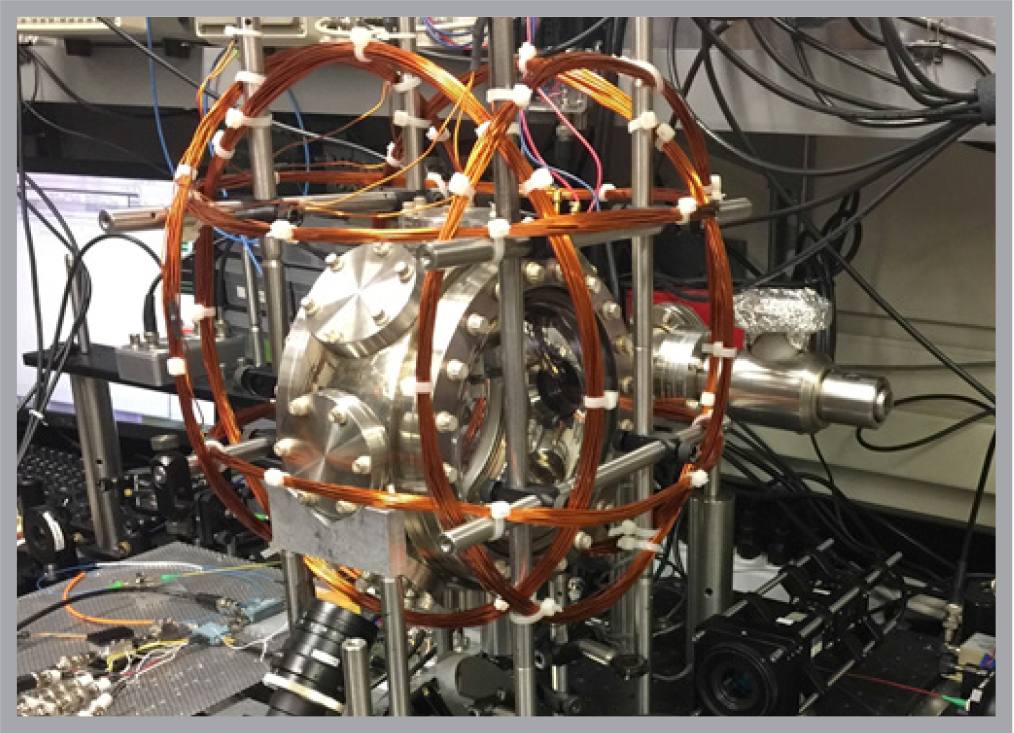How Many Lasers can You Fit into a Shoebox?
Holger Müller applied for his first patent at age 14 — an invention to boost TV resolution. “There was a shop that fixed TVs near where we lived in Munich, and they had thrown one away,” he recalls. “I schlepped it home and realized that inside they had a complete schematic.

“I took it apart — all the wires and vacuum tubes — and put it back together. It took me months after school. But it worked,” says Müller, now an associate professor of physics.
“A TV in those days — this one was built in the early 1970s — was a very stupid box,” he says. “It didn’t have intelligence or memory. Signals were transmitted, and the TV processed them in real time. So, if you wanted higher resolution you would have to change the incoming signal.
“Instead of transmitters having to send a higher resolution signal, I thought of splitting the signal. You could change the transmission to two separate, standard signals, but when they joined in a new TV, you would get a higher resolution picture than with your conventional TV.”
“Working on the invention was incredibly encouraging,” he says.
Apparently so. His lab is now refining and reconfiguring an instrument known as an atom interferometer for potential use in navigation, mineral exploration, surveying — and surveillance.
Like light, atoms can take the form of matter or waves. If a laser shoots at waves of cesium atoms, it can direct the atoms down two separate pathways. When the partial waves are re-
combined, the amplitude of the resulting wave will depend on the difference between the lengths of the two pathways.
If the pathways are the same length, then when the two waves meet, they add, doubling the wave amplitude. They are said to oscillate in phase. But if, for example, one pathway is shorter by just half a wavelength, then the waves will cancel each other out.
By measuring the net amplitude of the combined waves, researchers can deduce with great precision the difference in the lengths of the two pathways they traveled along. In some cases, the pathway length can be deduced down to a single wavelength — less than a millionth of a millimeter.

In addition to measuring distance, the technology can also be used to precisely determine gravity very accurately, since the force of gravity acting on the atoms also changes the paths. Müller starts to get up from his desk to diagram the effect on his white board, but quickly sits back down. “The ink has been used up in all of my white board markers.” The board is crammed end to end with equations.
Atom interferometry can provide precise measurements of gravity along a grid on the ground, allowing researchers to deduce differences in density below ground — indications of cavities or different types of rocks, among other possibilities.
This type of instrument would be a boon to mineral exploration and archeology — even for surveillance. The Israeli government, for example, is looking for ways to identify tunnels dug across their borders.
“Their Ministry of Defense dug a tunnel and didn’t tell anyone where it was. Then they invited manufacturers of different surveying technologies to find the tunnel. No one has found it yet.”
In principle, atom interferometers could do this and other underground surveying jobs well, but they tend to be quite bulky — about the size of a grand piano, Müller says. Hard to transport and hard to manipulate on site.
The Bakar Fellows Program is allowing him to redesign his atom interferometer — reducing the number of elements and the size of others. He hopes to shrink the device — now about as big as a washing machine — down to shoebox size.
“Other people are trying to retain their instrument’s complexity and pay an engineer or physicist to make it smaller. We’re tying to make everything much simpler — more elegant.” Instead of ten lasers now employed in the instrument’s maze of hardware, for example, his team aims to strip the system down to a single laser. “Like you’d find in a CD player,” he says.
With help from the Bakar Fellows Program, he is working with Honeywell Aerospace to develop the technology for use in navigation, and is talking to Cold Quanta, a company known for their atomic physics expertise, about collaborations on the technology and its market prospects.
“The Bakar Fellows Program and the Berkeley Intellectual Property Office have helped us to re-start the patenting of the technology,” he says.
Müller hopes that in a few years he will have his shoebox-sized instrument and can add a highly refined and practical technology to research and exploration.
____________________________
The Bakar Fellows Program supports innovative research by early career faculty at UC Berkeley with a special focus on projects that hold commercial promise. For more information, see http://bakarfellows.berkeley.edu.
